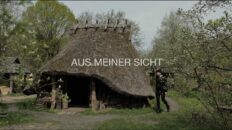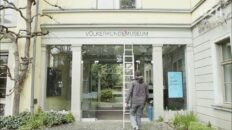Die NS-Silberabgabe von 1939 – Erbensuche, Zeitzeugen, Erinnerung an die Opfer Die zweistündige, emotionale Video-Schaltung mit Teilnehmen aus aller Welt war ohne Frage ein besonderes Highlight der Provenienzforschung am Bayerischen Nationalmuseum. Im Jahre 2019 veranstaltete das Bayerische Nationalmuseum eine Studioausstellung mit dem Titel „Silber für das Reich“. Im Mittelpunkt stand die Suche nach Erben von 112 Silberobjekten, die im Frühjahr 1939 im Rahmen einer NS-Zwangsmaßnahme 64 jüdischen Familien in München abgepresst wurden. Die Mehrzahl der Besitzer wurde später ein Opfer der Shoa. Zu 42 Familien konnte das Museum Kontakt herstellen und so erste Objekte restituieren. Am Internationalen Tag der Provenienzforschung machte das Bayerische Nationalmuseum auf dieses Projekt und seine vielen Unterstützer aufmerksam. In der Video-Veranstaltung kamen Vertreter der betroffenen Familien zu Wort, darunter eine Urenkelin und ein Enkel, die noch lebendige Erinnerungen an die einstigen Besitzer und das München der 1930er-Jahre haben. Vertreter einer anderen Familie lasen aus Briefen von 1941/42 vor, die unmittelbar vor den Deportationen geschrieben worden waren. Die Veranstaltung des Instituts für Kunstgeschichte der Ludwig-Maximilians-Universität München in Kooperation mit dem Bayerischen Nationalmuseum und dem Forschungsverbund Provenienzforschung Bayern (FDB) fand in englischer Sprache statt.
Einführung und Moderation Dr. Matthias Weniger, Bayerisches Nationalmuseum
The confiscation of precious metals from Jewish families in 1939 Plundered silver, the quest for heirs, and a tribute to the victims Wednesday, April 14, 6.30 p.m. European Summer Time Since 2019, the Bavarian National Museum has tried to identify the heirs of 112 silver objects. These are the last remains of quite literally tons of silver that Jewish families had to hand over to the authorities in the spring of 1939. Most of the owners later became victims of the Shoah. To date, the museum has been able to establish contact with 42 families and the first objects have been restituted. With the support of the German Lost Art Foundation we hope to be able to solve all remaining cases as well. On the International Day of Provenance Research the museum wished to draw attention to this project and the help it has received from many sources to carry it out. Above all, though, the program aimed to give a voice to the families themselves. A great-granddaughter and a grandson talked about the last legitimate owners of six of these objects, and of their memories of Munich in the 1930s. Members of another family read from letters from 1941/42, written imediately before their relatives were deported. Contributions from two other families included a prayer for those who perished in the Shoah, sung by a rabbi joining from New York. Families spread over all five continents were connected by this event. A meeting organized by the Institute of Art History of the Ludwig Maximilian University of Munich in cooperation with the Bavarian National Museum.
Coordinated and introduced by Dr. Matthias Weniger.
Weitere Informationen: Bayerisches Nationalmuseum




